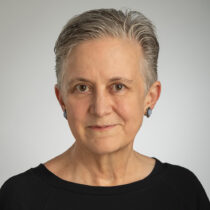Magazine

Partnerships to Repair Harm and Shed Light
By Nancy Bartlett, Interim Director
During my time as interim director of the Bentley, I’ve cultivated and encouraged strategic partnerships. The idea behind these collaborations is to enhance the understanding of both what the Bentley has and how the library can examine collections with fresh eyes, repair harmful historical descriptions, and construct new models for how to best engage colleagues across campus and beyond.
In the last issue of Collections magazine, you may have read about the ReConnect/ ReCollect project, which is an interdisciplinary, critical examination of the thousands of Philippine artifacts U-M has spread throughout its multiple campus locations—including the Bentley. One item in particular, a small painting that was misattributed, has now been correctly identified as the work of Fernando Amorsolo—an important Filipino painter who created an estimated 10,000 works over his lifetime, many depicting Filipino people, landscapes, and culture.
Now that this “unknown painting” has been correctly identified, it can shed light on Amorsolo’s career and deepen the understanding of the relationships between Americans, artists, and the indigenous Filipino people of the Baguio area, where it was painted.
This is one small example of the Bentley’s efforts to repair inadequate, inaccurate, and even harmful archival descriptions and this remains ongoing, important work. Although the ReConnect/ ReCollect project officially comes to an end in September 2023, we will continue these reparative efforts with faculty partners, fellow U-M curators, community members, artists, and more.
The Bentley also recently partnered with Eric Hemenway, Director of Repatriation, Archives and Records for the Little Traverse Bay Bands of Odawa Indians, in discussions about the John P. Murphy photograph collection. This collection contains several hundred images of Michigan in the late nineteenth century, many of which depict American Indian subjects. Hemenway generously provided expert advice on how best to curate these unique images.
I’ve also encouraged internal collaboration at the Bentley across teams. One example is the library’s new Potentially Harmful Language and Content Committee, which helps caution researchers about content that might be difficult or adverse. Recently, the committee developed a statement that is now on the website and acknowledges that “some collections reflect outdated, biased, offensive, and possibly violent views and opinions” and that the Bentley is “dedicated to revising and updating our descriptive language, and to describing archival materials in a manner that is respectful to the individuals and communities who create, use, and are represented in the collections we manage.” This is only a portion of the statement, and I invite you to read the text in its entirety here: myumi.ch/EP6R7 Great partnerships can serve to expand access to collections and shed more light on the past, and I look forward to leading additional collaborations in the future. An archive is most valuable when it’s used— when its holdings are researched, studied, and, ideally, better understood—and this never happens in a bubble.
